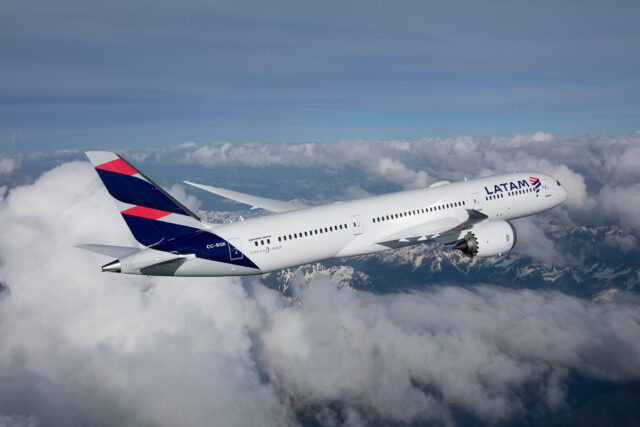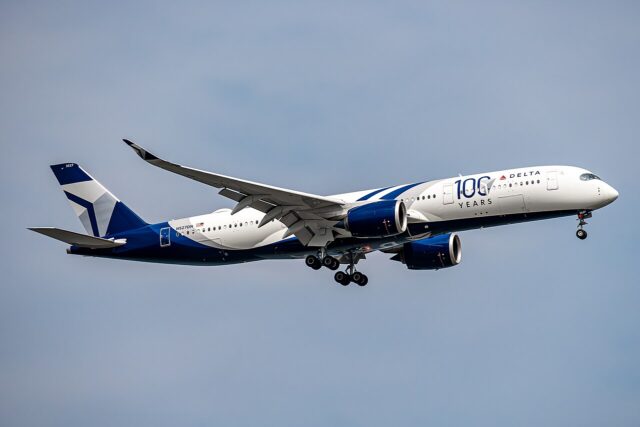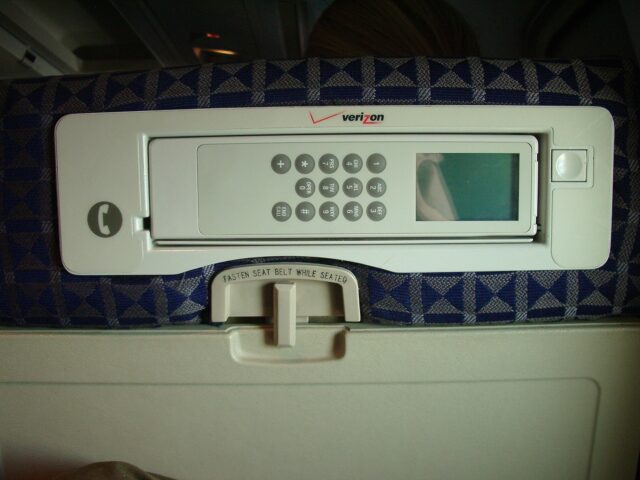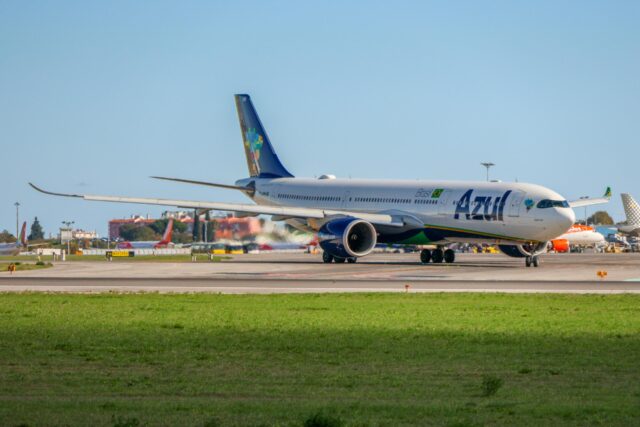Smart tech’s big leap: AI in the aviation market expected to reach $4.86 bn by 2030

July 11, 2025

From air traffic management and pilot training to predictive maintenance and streamlining passenger flow, artificial intelligence (AI) is rapidly reshaping the aviation industry.
A report from MarketsandMarkets has revealed that AI in the aviation market is anticipated to reach $4.86 billion by 2030, up from $1.75 billion in 2025, with a compound annual growth rate (CAGR) of 22.6%. A previous report from 2018 had positioned the sector to be worth $2.2 billion in 2025.
Propelled by advancements in machine learning, computer vision, sensor fusion and natural language processing technologies, AI is becoming increasingly integral to airport and airline operations, driving efficiency across the aviation ecosystem.
North America is currently at the forefront of AI integration in commercial aviation due to its early digital transformation by airlines and an established aviation ecosystem. According to MarketsandMarkets, carriers including Delta, United and American are actively deploying AI for predictive maintenance, route optimisation, customer personalisation and automated baggage handling.

Airports across the US, including hubs in New York, Dallas, Toronto and Vancouver are also implementing AI-driven systems for biometric boarding, automated security checks and smart baggage handling to improve throughput and passenger satisfaction.
The report also states that increased airport modernisation plans in Asia Pacific in destinations including Japan, India and South Korea are driving demand for advanced AI systems. This region is expected to record the highest CAGR in the AI in Aviation Industry over the next five years.
What is driving the growth in AI?
The surge in global air traffic in recent years is the main driver behind the wider adoption of AI. In March 2024, revenue passenger-kilometres (RPK) rose by 13.8% compared to the same month in 2023. By late 2024, passenger airlines had transported around 9.5 billion people, in most cases exceeding 2019 figures.
This surge in passenger traffic has pushed airlines, airports and their partners to operate beyond traditional scaling limits. Increased flight frequency has led to tighter turnaround times and an increased reliance on predictive maintenance to enhance efficiency.
Innovative AI-driven tools, such as Lufthansa Technik’s AVIATAR and KLM’s Prognos use machine learning to continually monitor thousands of aircraft components. According to Deloitte, AI-based maintenance can decrease aircraft downtime by 5 to 15 % while enhancing labour efficiency by up to 20%.
In May 2025, an agreement between US-headquartered GE Aerospace and Qatar Airways for 400 GE9X and GEnx engine maintenance included the integration of AI-driven predictive maintenance and engine health monitoring technologies to optimise fleet performance and reliability.
Similarly, in April Singapore Airlines announced a partnership with OpenAI to introduce advanced generative artificial intelligence (GenAI) tools across parts of its business. The AI systems, capable of interpreting text, audio, diagrams, and videos, are expected to improve SIA’s virtual assistant service and streamline staff workflows.
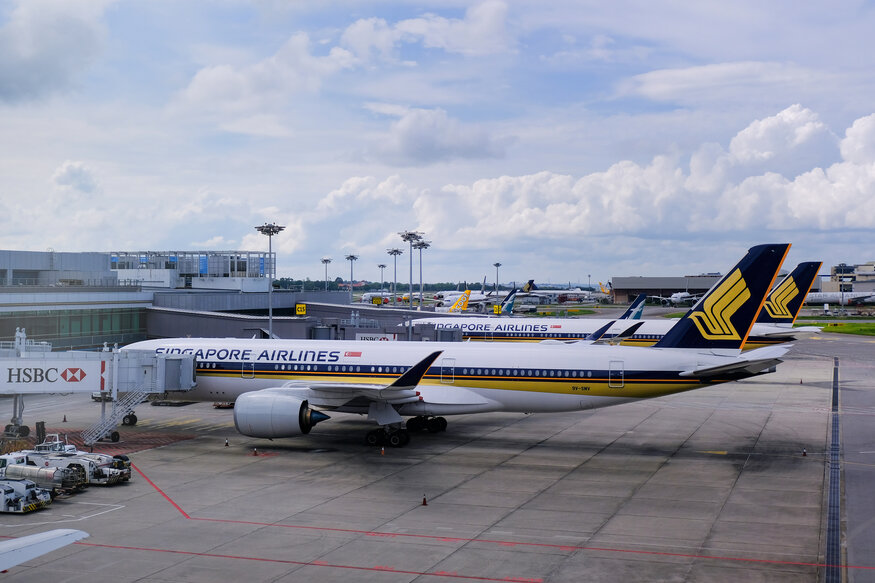
The application of AI in pilot training
Pilot training is also evolving with AI revolutionising flight training programmes around the world. Leading the charge is CAE, the Canadian aerospace giant trains over 150,000 pilots a year and has an entire team dedicated to finding new innovations.
AI has the potential to transform the industry, according to Christopher Ranganathan, CAE’s chief learning officer for commercial aviation training. Talking to Aerospace Global News last month he said that “AI can certainly assist in the creation of training programmes and can be used to model various training scenarios, thereby enhancing training efficacy.”
It can also be used to tailor training programmes and analyse data from training events to assess pilot performance and identify weaknesses. More broadly, Ranganathan sees AI as an enabler of evidence-based training (EBT) – the data-driven methodology that prioritises real-world threats and errors over procedural testing.

AI in ATM
Air Traffic Management (ATM) is another key area where AI is transforming operations.
Traditional ATM systems often suffer from fragmented data sources and communication channels, with controllers having to manage complex and dynamic environments requiring precise coordination and rapid decision-making.
Airports and Air Navigation Service Providers (ANSPs) are increasingly turning to advanced technologies such as automation and AI to streamline routine tasks, enhance data integration, improve predictability and improve overall efficiency. By processing real-time traffic, weather and surveillance data, these AI-driven systems and digital twin technologies enable more precise sequencing and routing, reducing congestion and fuel burn while supporting next-gen objectives.
Frequentis’ TowerPad is one solution in service at several major airports providing AI to support advanced user-centric automation services for air traffic controllers.
The TowerPad integrates all tower applications into one screen showing controllers everything they need to see and automating low-value manual tastks. In addition to reducing taxi times and improving safety the TowerPad also helps keep costs down for airlines, airports and ANSPs.
Operated by Abu Dhabi Airports, Zayed International Airport deployed Frequentis’ Advanced Automated Tower concept in 2023. Central to this concept is the seamless management provided by TowerPad.

“It has resulted in a massive reduction in taxiway incursions,” according to Andrew Edwards, ATC Training Instructor, GANS. He explained the automated system plays a key role in reducing taxi times and optimising aircraft movements airsde.
“The safety nets incumbent in the system protect us from taxiway and runway incursions. The less complicated things are, the more traffic we can manage,” added Edwards.
Sustainability and the cybersecurity challenge
In addition to streamlining operations, reducing delays and improving the passenger experience, AI also has a key role to play in the industry’s wider drive for sustainability. It enables fuel optimisation, efficient flight routing and emission tracking across fleets.
Australian carrier, Qantas, has for example implemented an AI-powered decision support system that has resulted in savings of $26million in fuel costs and an average reduction of over five minutes per flight by optimising cruise altitudes and flight routes for its domestic fleet.

Despite the benefits of the wider adoption of AI and automated solutions, challenges remain.
As air transport systems become increasingly dependent on networked digital infrastructure, the cyber threat landscape becomes increasingly significant. From simple data breaches to large-scale operational sabotage the wider deployment of AI leaves airlines, aircraft and airports more susceptible to a range of cyberattacks.
This growing threat is underpinned by notable incidents including the 2018 breach of British Airways, which compromised the data of over 400,000 customers and resulted in a GDPR fine of £20 million. Similarly, in 2022 Air India and Bangkok Airways suffered cyberattacks highlighting the vulnerabilities in automated airline reservation systems and AI solutions worldwide.
